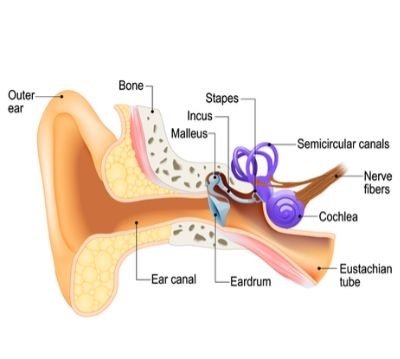Q: What is a Stapedectomy surgery?
A: Stapedectomy is your ear operation to take care of the problem brought on by hearing loss known as otosclerosis that might trigger the build-up of bone across the stapes. The bone formation makes hamper the motion of the stapes causing notice reduction known as conductive hear reduction.
Q: What is the procedure used to treat Otosclerosis?
A: Osteosclerosis is the creation of bone in the middle ear leading to hears loss that could be fixed by the surgical process known as stapedectomy or by using hearing aids.
Q: Does Otosclerosis cause deafness?
A: It’s a condition usually caused by the formation of bone from the ears which frequently causes more difficulties to an ear than the other. If the status isn’t treated nicely it might lead to hearing loss that worsens until late middle age to come up with complete deafness.
Q: How much time the surgery usually take?
A: The operation generally takes between 1-1.5 hrs. The operation requires an anesthetic either general or local which causes nausea. The place of the head is going to be transferred at particular stages throughout the surgery to prevent the complications of position for a longer period.
Q: How will it be known that the surgery is a success?
A: A small hearing advancement will be observable at the conclusion of the operation. In the majority of the patients, much improvement will be detected until fourteen days following the operation. It might take around six weeks following the operation to get the intended outcome.
Q: Does Osclerosis happen to both ears?
A: The condition may affect both the ears but usually one ear will be more affected than the other. The surgery will be done usually on the worse hearing side and can proceed to another ear after achieving stable results on the first side. The surgery cannot be done simultaneously on both ears as there is a risk of hearing loss in the ear after the surgery. Some patients may choose the option of bilateral surgery after agreeing to the possible risks of the surgery.
Q: Is Otosclerosis related to pregnancy?
A: Otosclerosis occasionally may pose during pregnancy due to the fact that a lot of women see hearing impairment during pregnancy as a result of fluctuations in hormone levels which impacts osteosclerotic bone.
Q: Who are the people most affected with Otosclerosis?
A: Otosclerosis is the most frequent condition of hearing reduction impacting young adults. It’s mostly common in women than men generally starting at young to mid-adulthood.
Q: How to diagnose Otosclerosis?
A: Otosclerosis can be identified by the physicians who specialize in treating hearing disorders like an otolaryngologist utilizing audiograms, tympanogram, and also CT scans.
Q: How does Otosclerosis cause hearing loss?
A: The abnormal growth of the bone at the base of stapes in the middle ear interferes with the sound to reach the eardrum which causes hearing loss either in one ear or both.
Q: Is Otosclerosis an Autoimmune disorder?
A: The etiology of otosclerosis is an autoimmune inflammatory disease. Its etiopathogenesis contains measles virus disease, anti-collagen autoimmunity, inflammation, bone loss, organotropism, metabolic and hormonal aspects.
Q: Does the bone in the ear break?
A: Cartilage is the linking part between ear bone and tissue. It can’t be broken but might become dull on account of the blunt injury caused by it. The majority of the times the injury may heal by itself but needs to be checked with the physician with some signs like hearing loss, buzzing noise, and pain.
Q: What is ear Cholesteatoma?
A: This is a nonmalignant abnormal growth that develops in the middle ear behind the eardrum. It may be caused due to repeated middle ear infections or maybe a birth defect. It usually develops as a cyst which shed off the old skin frequently.
Q: What are the eligibility requirements for a medical visa to India?
A: The patient has to have a valid passport and visa in addition to the treatment program in a reputed hospital accepted by the authorities of India. The individual could accompany two attendants on precisely the exact same visa with no more than 3 entries each year.






















